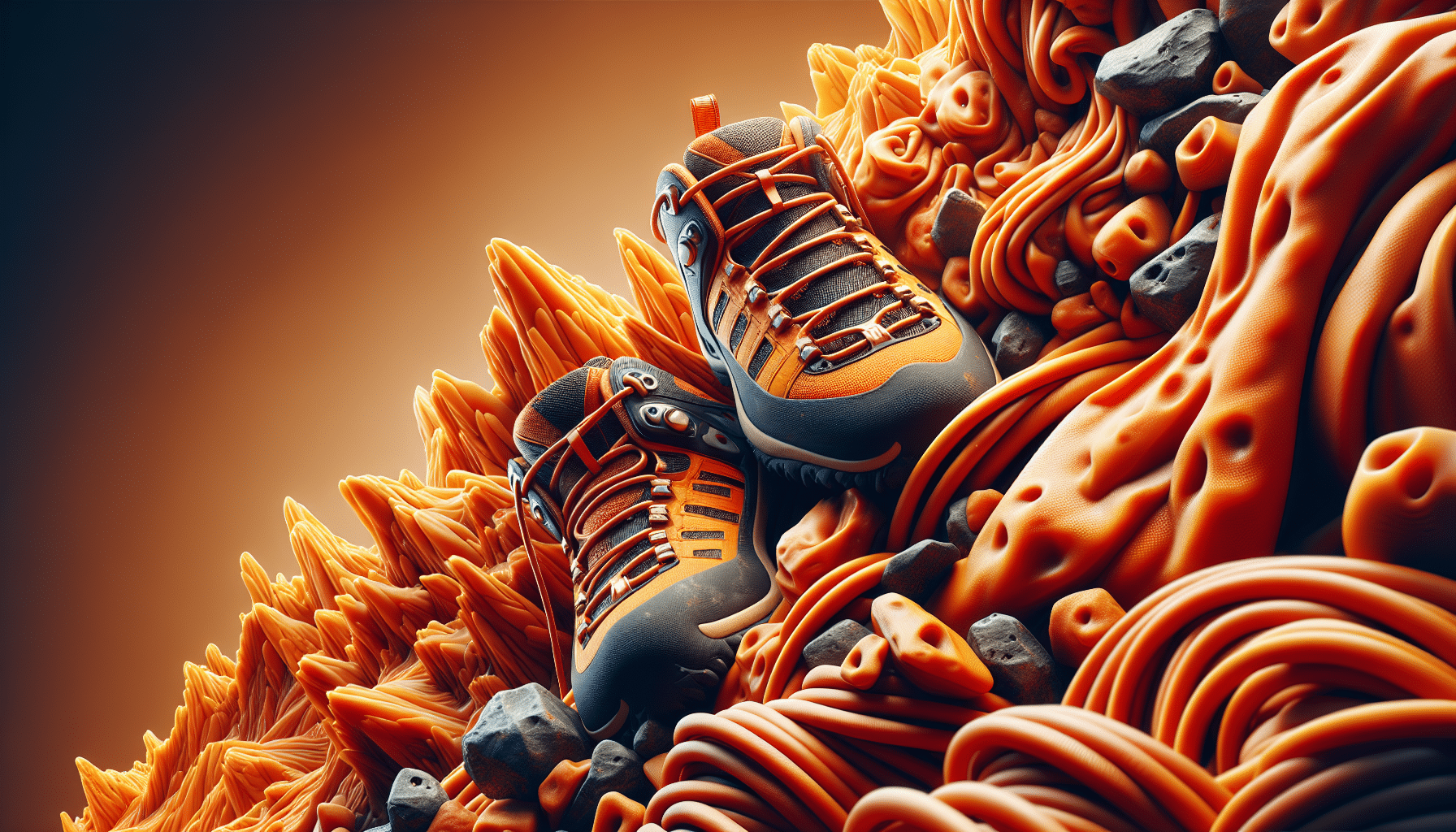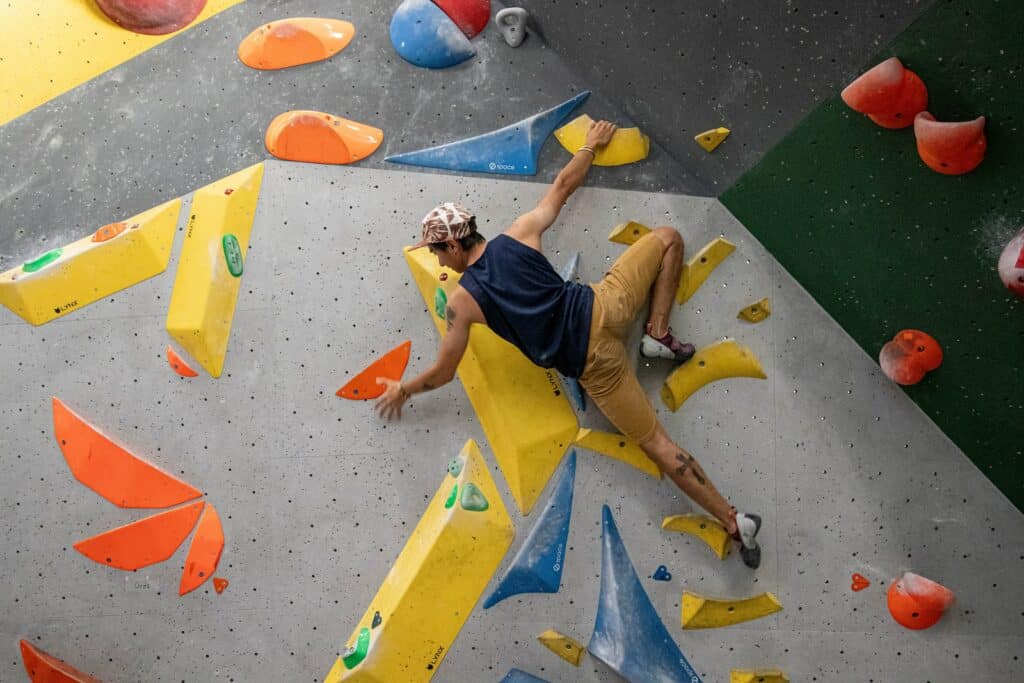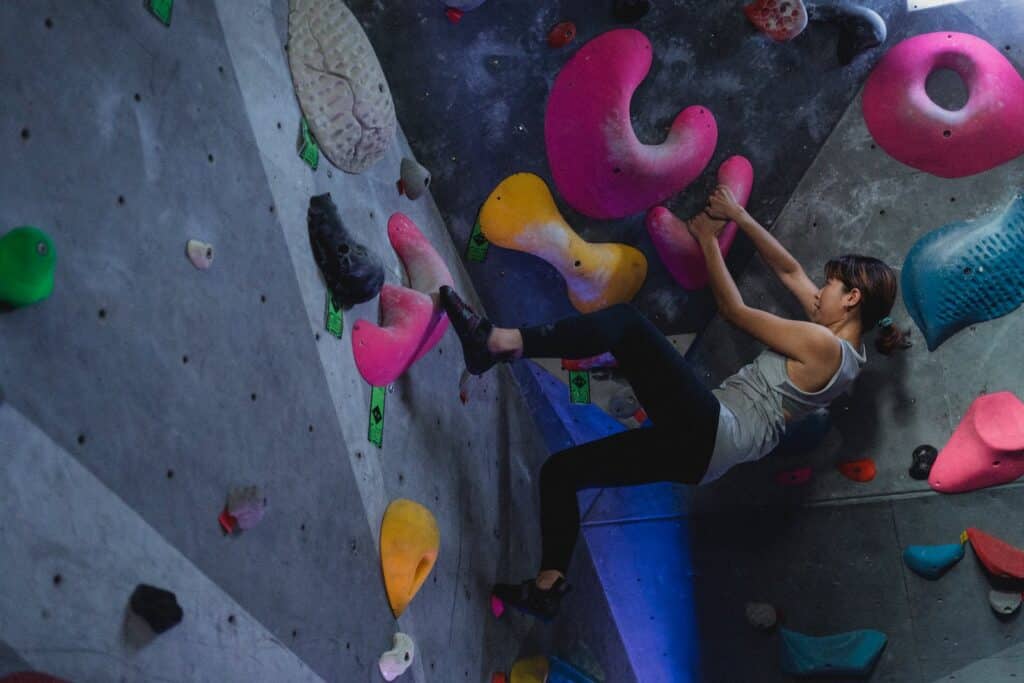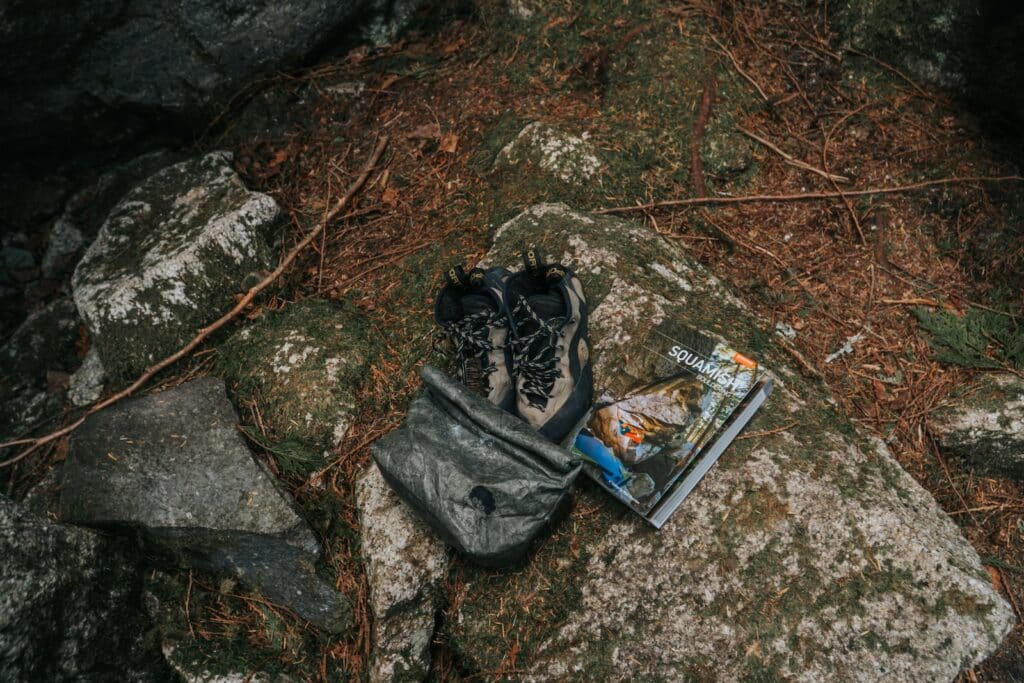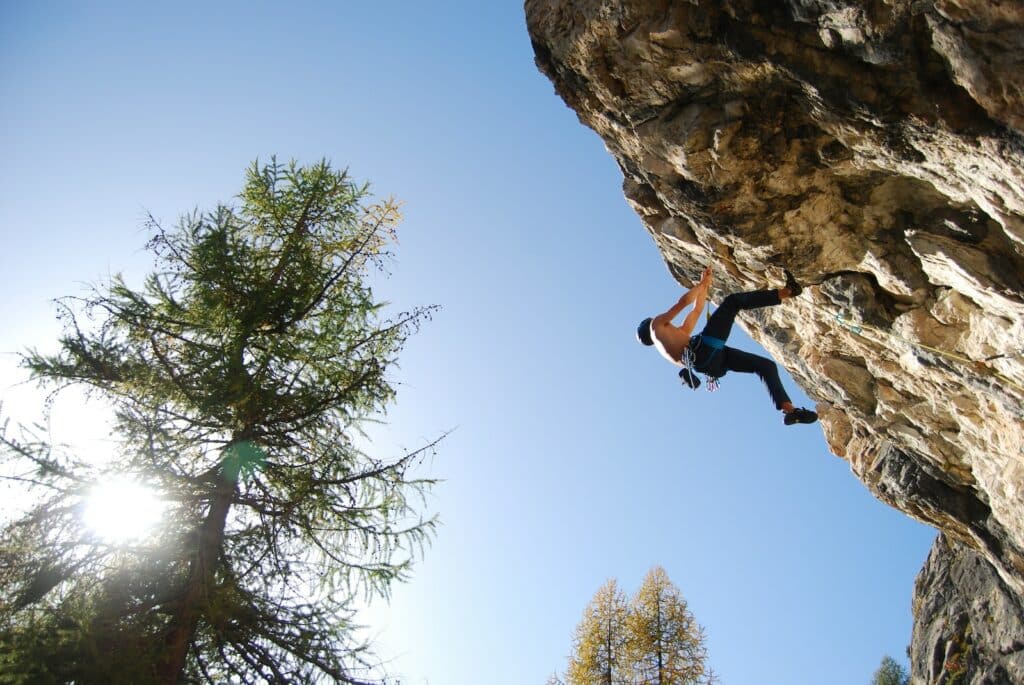Table of Contents
ToggleGetting Started with Climbing Shoes
You’re about to embark on an exciting journey into the world of rock climbing. But before you get started, you need to understand the essential gear you’ll need. At the top of the list are climbing shoes. Your first pair of climbing shoes will play a significant role in your climbing experience. So, let’s dive into some key things you need to know!
Introduction to Climbing Shoe Rubber
The first thing you need to know is that the rubber on climbing shoes is not just any rubber. It’s the heart and soul of the shoe, the key to your grip on the rock!
Climbing shoe rubber is typically made from a sticky compound called “Vibram” that provides excellent friction on rock surfaces. This “stickiness” is what helps you stay connected to the rock, especially when you’re navigating those tricky holds.
Different climbing shoe brands use different types of rubber, with some popular options being Vibram, Stealth, and Trax. Each type of rubber has its own unique properties and characteristics, such as stickiness, durability, and edging ability.
For instance, Vibram rubber is known for its durability and versatility, Stealth rubber (used by Five Ten) is renowned for its exceptional stickiness and grip on various types of surfaces, and Trax rubber (developed by Evolv) offers a balance between stickiness and durability (Climbing Shoe Review).
However, like all things, climbing shoe rubber isn’t invincible. Over time, it wears out and loses its sticky properties, reducing the shoe’s performance (REI). But don’t worry, we’ve got tips on climbing shoe care to help keep your shoes in tip-top shape!
Choosing Your First Pair
Now that you’re up to speed on climbing shoe rubber, it’s time to choose your first pair of climbing shoes. Here are a few things to consider:
- Rubber Type: As we’ve discussed, the type of rubber can impact the shoe’s performance. Think about what kind of climbing you’ll be doing and choose a rubber type that matches your needs.
- Fit: Climbing shoes should fit snugly but not painfully. Our guide on climbing shoe sizing can help you find the right size.
- Shape: Climbing shoes come in different shapes, from flat (neutral) to downturned (aggressive). Learn more about these shapes in our article on aggressive vs neutral climbing shoes.
- Brand: Each brand has its unique features. Check out our list of climbing shoe brands to find one that suits your style and budget.
Remember, the best climbing shoes for you are the ones that fit well and suit your climbing style. It’s always a good idea to try on several pairs before making your decision. Happy climbing!
Understanding Climbing Shoe Rubber
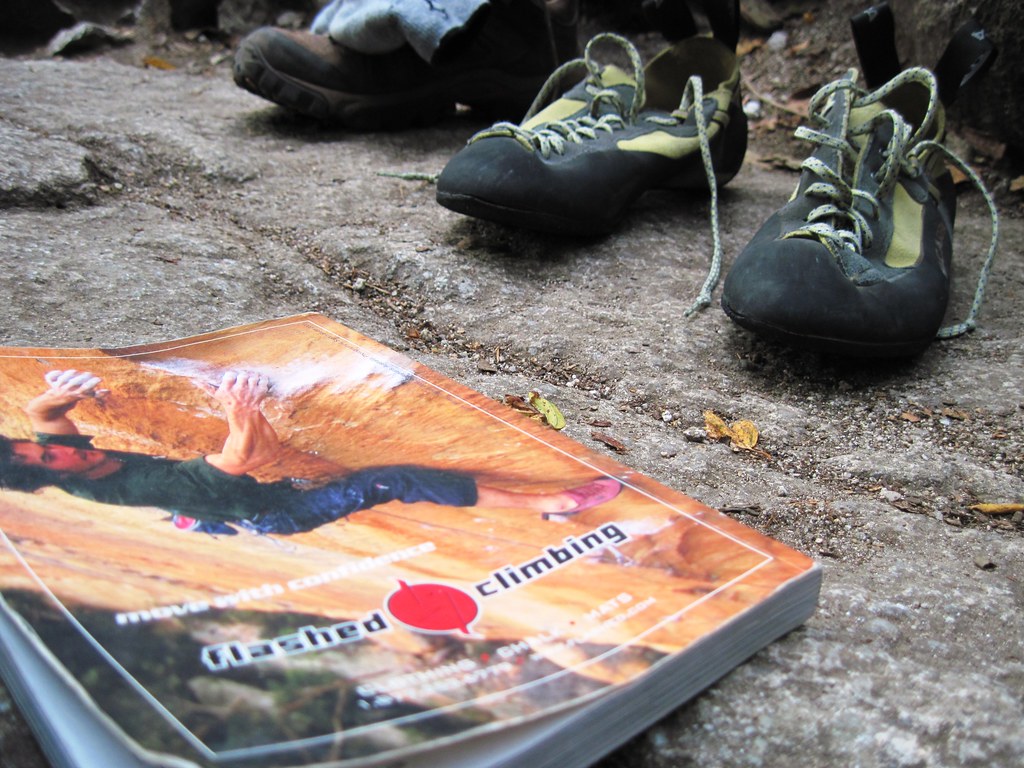
Get ready for a rubber revolution! In the world of climbing, the rubber used in your shoes plays a massive role in how you interact with the rock. The type of rubber your shoes are made of can affect your grip, your ability to edge, and overall, your climbing performance. So let’s dive into the fascinating world of climbing shoe rubber!
Characteristics of Climbing Shoe Rubber
Climbing shoe rubber comes packed with a bunch of cool features, each with its own unique properties and characteristics, such as stickiness, durability, and edging ability.
Stickiness, or friction, is the rubber’s ability to grip the rock. The stickier the rubber, the better it will adhere to even the smallest of footholds. Durability refers to how long the rubber will last before it wears down and needs to be resoled. Edging ability is how well the rubber can support your weight on tiny edges.
Understanding these characteristics of rubber can help you make a better-informed decision when choosing your first pair of climbing shoes. Remember, a shoe with great rubber can boost your confidence on the rock and help you climb your best!
Types of Climbing Shoe Rubber
Ready for some rubber talk? Different climbing shoe brands use different types of rubber, and it’s crucial to know what you’re getting. Some popular options are Vibram, Stealth, and Trax.
Vibram rubber is known for its durability and versatility, making it a popular choice among climbers. It’s like the all-rounder of the rubber world, helping you to tackle various types of terrain with ease.
Stealth rubber, used by Five Ten, is the secret agent of rubbers. Renowned for its exceptional stickiness, it provides incredible grip on various types of surfaces, giving you the confidence to make those daring moves.
Trax rubber, developed by Evolv, strikes a balance between stickiness and durability, making it a reliable choice for climbers. It’s like the best of both worlds, offering you great grip without wearing out too quickly.
| Rubber Type | Brand | Stickiness | Durability | Edging |
|---|---|---|---|---|
| Vibram | Various | High | High | High |
| Stealth | Five Ten | Very High | Moderate | High |
| Trax | Evolv | High | High | Moderate |
Figures courtesy Climbing Shoe Review
Choosing the right rubber type for your first rock climbing shoes is all about understanding your climbing style and terrain. Whether you’re a gym climber, a boulderer, or a multi-pitch traditional climber, there’s a shoe with the right rubber waiting for you. Now, go forth and conquer those rocks!
Brands and Their Rubber Types
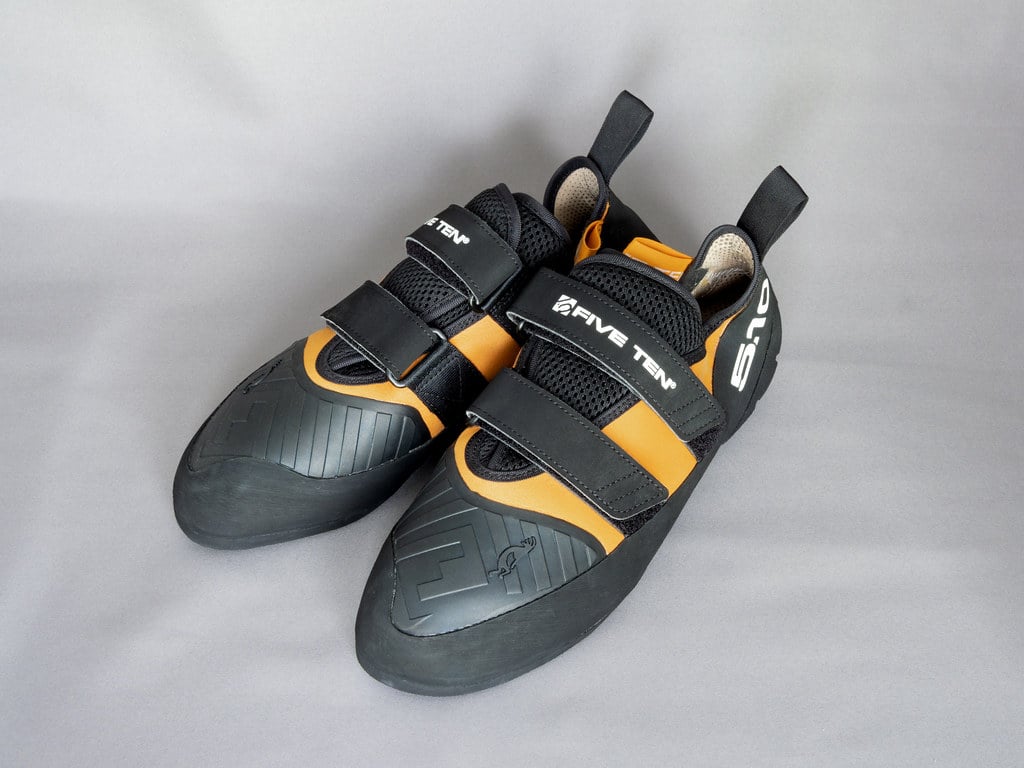
Alright, let’s dive into the exciting world of climbing shoe rubber! We’ll explore the unique characteristics of Vibram, Stealth, and Trax rubber, and how they can impact your climbing experience.
Vibram Rubber and Its Uses
First up, Vibram rubber. Known for its durability and versatility, Vibram rubber is a popular choice among climbers. This type of rubber is excellent at maintaining its friction, making it a reliable option for various climbing styles.
There are two main types of Vibram rubber used in climbing shoes: Vibram XS Edge and Vibram XS Grip 2. XS Edge is lauded for its exceptional durability and strength, making it ideal for sport climbing and bouldering. On the other hand, XS Grip 2 offers a high level of grip on a variety of rock types, making it suitable for both indoor and outdoor climbing (Gripped).
Stealth Rubber and Its Strengths
Next, we have Stealth rubber. Developed by Five Ten, this type of rubber is renowned for its exceptional stickiness and grip on various types of surfaces. Stealth C4 rubber provides excellent friction and stickiness, making it a popular choice for crack climbing and slab climbing.
The stickiness of Stealth rubber can give you a real edge when you’re trying to stick to those tricky holds. Just imagine it as your secret sticky weapon in your climbing arsenal!
Trax Rubber and Its Benefits
Finally, there’s Trax rubber. Developed by Evolv, Trax rubber offers a balance between stickiness and durability, making it a reliable choice for climbers. This type of rubber is known for its ability to perform well across a variety of climbing styles, providing both the grip you need on challenging routes and the durability to withstand regular use.
Choosing the right climbing shoe rubber can significantly impact your climbing performance. It’s essential to consider your climbing style and preferences when picking out your shoes. Don’t forget to check out our comprehensive guide on climbing shoe technology to learn more about the features that can help you climb your best!
Performance and Durability of Climbing Shoe Rubber
When it comes to rock climbing, every tiny detail matters, and that includes the type of rubber on your climbing shoes. Different climbing shoe brands use different types of rubber, with some popular options being Vibram, Stealth, and Trax. Each type of rubber has its own unique properties and characteristics, such as stickiness, durability, and edging ability. Now, let’s delve into what influences the performance and durability of the climbing shoe rubber.
Factors Influencing Performance
The performance of climbing shoe rubber is heavily influenced by its ability to hold onto the rock surface. Here, the stickiness or friction of the rubber is crucial. Stealth rubber, used by Five Ten, is renowned for its exceptional stickiness and grip on various types of surfaces.
On the other hand, Vibram XS Grip 2 rubber offers a high level of grip on a variety of rock types, making it suitable for climbing shoes used in both indoor and outdoor climbing (Gripped).
Another significant factor impacting performance is how well the rubber edges. What this means is how well the shoe can stand on tiny footholds. Certain types of rubber are better at this than others, which can have a significant impact on your climbing performance. To learn more about how climbing shoe rubber can affect your climb, check out our article on climbing shoe performance.
Factors Influencing Durability
When it comes to durability, the composition of the rubber is key. Vibram rubber, for instance, is known for its durability and versatility, making it a popular choice among climbers.
Specifically, Vibram XS Edge rubber is known for its exceptional durability and strength, making it ideal for climbing shoes used in sport climbing and bouldering.
Trax rubber, developed by Evolv, offers a balance between stickiness and durability, making it a reliable choice for climbers (Climbing Shoe Review).
Keep in mind that while a more durable rubber may last longer, it could also compromise on performance in terms of grip. So, it’s all about finding the right balance for your specific climbing needs.
Maintaining the durability of your climbing shoe rubber also comes down to proper care and maintenance. This includes cleaning your shoes after each use and storing them properly. For more helpful tips on extending the life of your climbing shoes, check out our climbing shoe care guide.
So there you have it, a deep dive into the performance and durability of climbing shoe rubber. Remember, the best rubber for your climbing shoes largely depends on your specific climbing style and needs. Now, go get your climb on!
Care and Maintenance of Climbing Shoes
Once you’ve chosen your first pair of climbing shoes, it’s crucial to know how to take care of them. Proper care and maintenance can help extend the lifespan of the rubber and improve the overall performance of your shoes. So, let’s dive into how to clean and store your climbing shoes to keep them in top shape!
Cleaning Your Climbing Shoes
First thing’s first, keep your shoes clean! Dirt and grime can degrade the climbing shoe rubber, reducing its sticky properties and affecting your shoe’s performance. So, after each climb, use a soft brush to gently remove any dirt from the soles.
Avoid using harsh cleaners or soaking your shoes in water as this can damage the rubber and other materials. Instead, if your shoes need a more thorough cleaning, use a damp cloth and mild soap on the soles, then let them air dry.
Remember, even the best climbing shoe rubber can wear out over time, especially if used frequently or on rough surfaces. So, it’s important to regularly inspect your shoes for signs of wear and consider resoling them when necessary to maintain optimal performance.
Storing Your Climbing Shoes
When it comes to storing your climbing shoes, the key is to keep them in a cool, dry place. This helps prevent the rubber from degrading. Also, make sure to let your shoes air out after each use to prevent any unpleasant odors.
Avoid storing your shoes in extreme temperatures or in direct sunlight, as this can cause the rubber to deteriorate faster. And, never leave your shoes in your car or in a hot garage!
By taking the time to care for your climbing shoes, you can help extend their lifespan and keep that precious climbing shoe rubber in top condition! For more info on how to care for your climbing shoes, check out our guide on climbing shoe care. And remember, happy climbing starts with happy feet!
Tips for Climbing Shoe Longevity
As a beginner rock climber, I understand that it can be nerve-wracking to invest in your first pair of climbing shoes. You want to get the most out of your purchase, right? Well, a massive part of that is understanding how to care for your shoes and when to replace them. The climbing shoe rubber, in particular, requires special attention.
Inspecting for Wear and Tear
First things first, you need to regularly inspect your climbing shoes for signs of wear and tear. The rubber on climbing shoes can wear out over time, especially if used frequently or on rough surfaces. This wear can reduce the shoe’s performance by making it lose its sticky properties, which are essential for maintaining a good grip on the rock.
So, what should you look out for? Pay attention to the sole of the shoe. If you notice any thinning or holes, it’s a clear sign that the rubber is wearing out. Also, keep an eye on the edges of the shoe. If they’re rounded or worn down, it might be time to consider a replacement.
When to Replace Your Climbing Shoes
Knowing when to replace your climbing shoes can be a bit tricky. After all, you don’t want to part ways with your trusty companions too soon. However, if you notice that the rubber on your shoes has become significantly thin, or there are visible holes, then it’s likely time for a new pair.
Also, if you find that your shoes aren’t providing the same level of grip as they used to, it’s a sign that the rubber has worn out and lost its stickiness.
Remember, the performance and durability of climbing shoe rubber are influenced by the type of rubber used, the thickness of the rubber sole, and the tread pattern (Climbing Shoe Review). So, different shoes might need to be replaced at different intervals.
Taking care of your climbing shoes doesn’t have to be a chore. In fact, it’s a great way to ensure you’re always at the top of your game. For more tips on maintaining your climbing shoes and extending their lifespan, check out our guide on climbing shoe care. Happy climbing!

